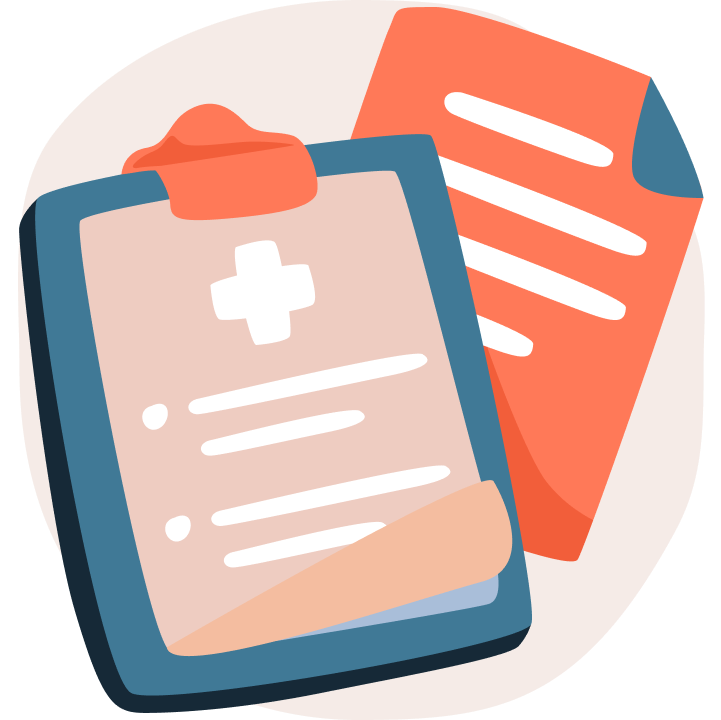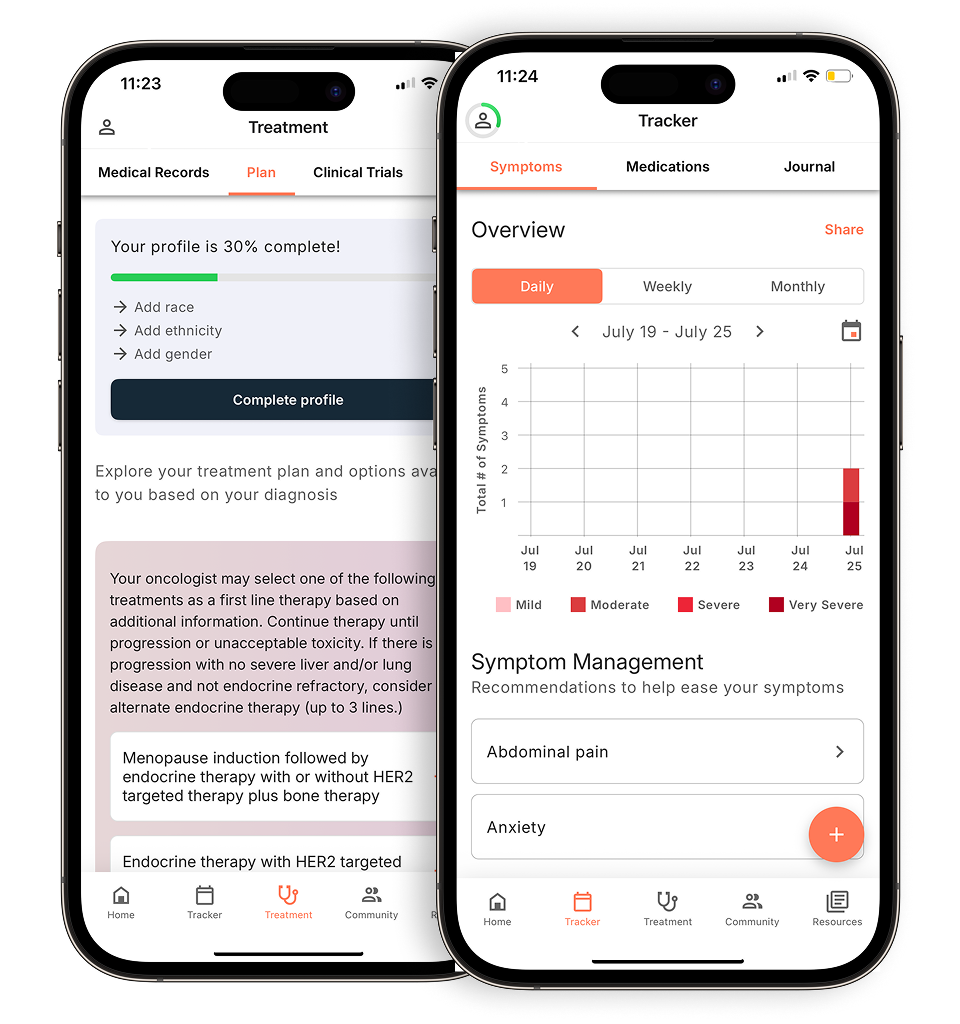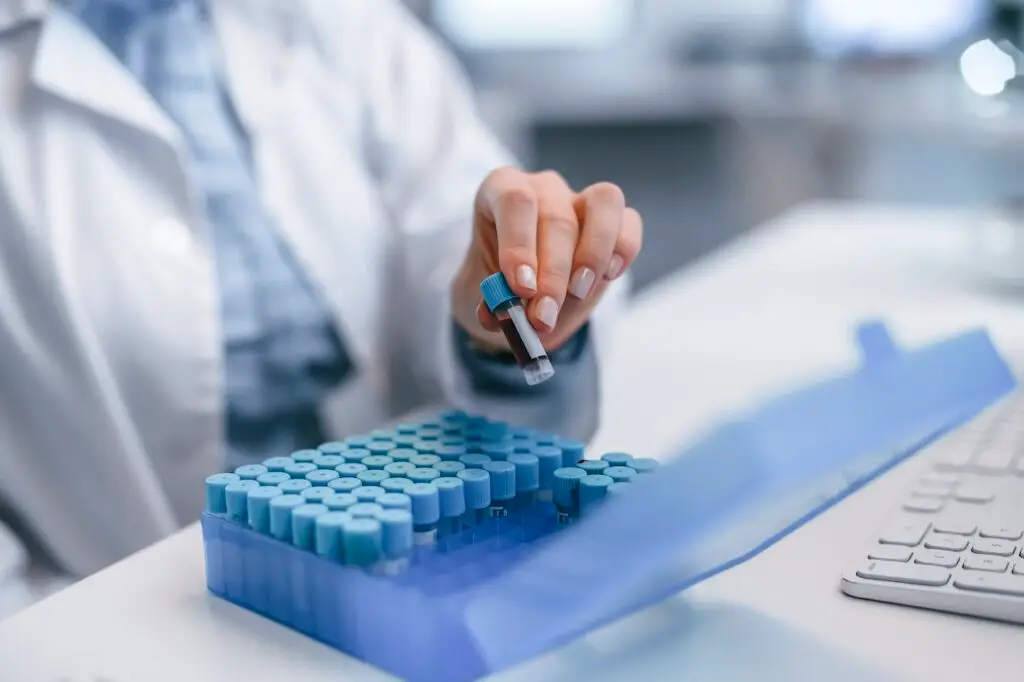Lung Cancer Back Pain – What it Feels Like & Treatment
When diagnosed with or going through treatment for non-small cell lung cancer (NSCLC), you might experience some level of back pain or discomfort. According to the Dana-Farber Cancer Institute, approximately 25% of people with lung cancer experience back pain, sometimes even before they’ve officially been diagnosed with NSCLC.
In those cases, the uncomfortable back pain can come from a tumor putting pressure on the muscles and organs surrounding the lungs, causing pressure on the spine. In some cases, back pain is the first symptom of NSCLC.
NSCLC-related back pain is usually accompanied by additional symptoms of lung cancer, including:
- A persistent cough for more than 2 weeks
- Shortness of breath, hoarseness or wheezing
- Chest pain when breathing
- Recurring chest infections
- Coughing up blood
- Fatigue
- Headache
- Swelling in the neck or face
- Loss of appetite and unexpected weight loss
- Chronic pneumonia or bronchitis
If you’re experiencing back pain related to your cancer, be sure to talk to your care team about therapies that might help with the pain.
Evidence-based guidance powered by NCCN Guidelines®
Personalized treatment plans shaped by the latest oncology standards—tailored to your diagnosis.
Get started
View your personalized treatment plan in the Outcomes4Me app
Use your diagnosis to unlock personalized NCCN Guidelines®-aligned recommendations.
Continue in app
Your back pain could worsen as the cancer spreads.
Your doctor might order a test to look more closely at the bones in your back when you’re experiencing pain, such as an X-ray, CT scan, MRI, or PET scan. Blood tests to check your calcium levels might also help indicate if you have one or more of the following diagnoses:
- Spinal cord compression: When the cancerous tumor spreads, it can put uncomfortable pressure on your spinal cord and the nerves around your spine. When this happens, the pain can spread to your arms and legs and cause other parts of your body to feel numb, weak, or stiff.
- Leptomeningeal metastasis: If your cancer spreads into the tissue and fluid that covers your spinal cord and brain it can cause back pain, as well as headaches and weakness in your extremities.
- Increased calcium levels: If your lung cancer has spread to your bones, your calcium levels can rise and cause hypercalcemia, resulting in nausea, vomiting, thirst, headaches, and weakness in your extremities. Your doctor might recommend you drink more water or prescribe a drug to bring your calcium levels back to normal.
NSCLC treatment can also cause back pain. While the pain might occur as an immediate symptom during treatment, it’s possible it could worsen at any point during treatment or even afterward.
Your doctor might recommend a palliative care expert to help you manage the pain. Treatments could range from regular exercise and stretching to one or more of the following list of therapies:
- Medication (either opioid or non-opioid)
- Antidepressants
- Physical therapy
- Braces
- Acupuncture
- Yoga
- Mediation
- Nerve Blocks
- Surgery
If you haven’t been diagnosed with NSCLC but experience any of these symptoms with sudden and constant back pain, contact your care provider immediately.
If you would like to talk more about back pain or any other side effects you can connect with an Outcomes4Me oncology nurse practitioner at no charge through the Outcomes4Me app, using the “Ask Outcomes4Me” button.
Lung Cancer Back Pain – What it Feels Like & Treatment
When diagnosed with or going through treatment for non-small cell lung cancer (NSCLC), you might experience some level of back pain or discomfort. According to the Dana-Farber Cancer Institute, approximately 25% of people with lung cancer experience back pain, sometimes even before they’ve officially been diagnosed with NSCLC.
In those cases, the uncomfortable back pain can come from a tumor putting pressure on the muscles and organs surrounding the lungs, causing pressure on the spine. In some cases, back pain is the first symptom of NSCLC.
NSCLC-related back pain is usually accompanied by additional symptoms of lung cancer, including:
- A persistent cough for more than 2 weeks
- Shortness of breath, hoarseness or wheezing
- Chest pain when breathing
- Recurring chest infections
- Coughing up blood
- Fatigue
- Headache
- Swelling in the neck or face
- Loss of appetite and unexpected weight loss
- Chronic pneumonia or bronchitis
Personalized support for real care decisions
Understand your diagnosis, explore clinical trials, and track symptoms--all in one place.
Get started
Compare treatments, prepare for appointments, and track side effects—all in the app
Built for your diagnosis, Outcomes4Me gives you the tools to make confident, informed decisions—right when you need them.
Continue in app






